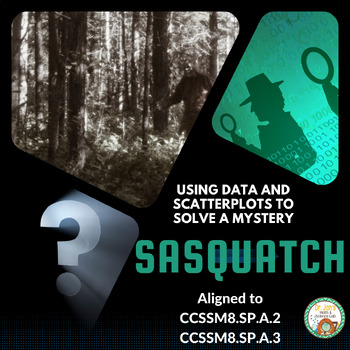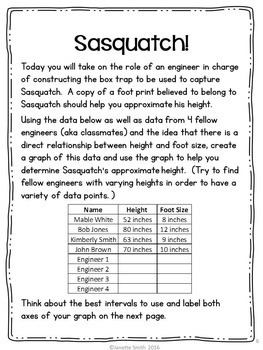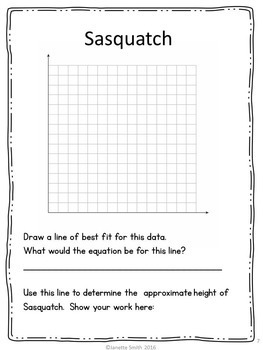Scatterplots and Line of Best Fit
- PDF
What educators are saying
Also included in
- This bundle includes 2 engaging activities where students can apply the skills of plotting points in a scatterplot, making a line of best fit, and finding the slope of the line to find missing data. Fun scenarios of Sasquatch and a crime scene hook kids into learning. Please leave feedback, you caPrice $4.00Original Price $5.00Save $1.00
Description
This engaging activity allows students to apply their knowledge of slope, scatterplot data, and line of best fit to figure out how tall Sasquatch is. Taking the role of engineers, students use a foot print of sasquatch to approximate his height which is needed to construct a trap. An engaging newspaper article sets the scene of the recent Sasquatch sightings at the local park.
This activity is also available in a bundle at a discounted rate:
Scatterplots and Line of Best Fit Bundle
Aligned to Common Core Math Standards.
Please leave feedback and earn TpT credits for future purchases.
If you like this activity, consider following my store and check out these similar middle school math products:
Scatterplots and Line of Best Fit, Whodunit
Zombie Apocalypse and Exponential Decay
Design and Aquatic Park: Project Based Learning
Identifying exponential and linear growth
Systems of Equations: Buried Treasure
Please leave feedback on this product! You can earn TpT products. Also consider following my store as I work to build up my middle school math products.






